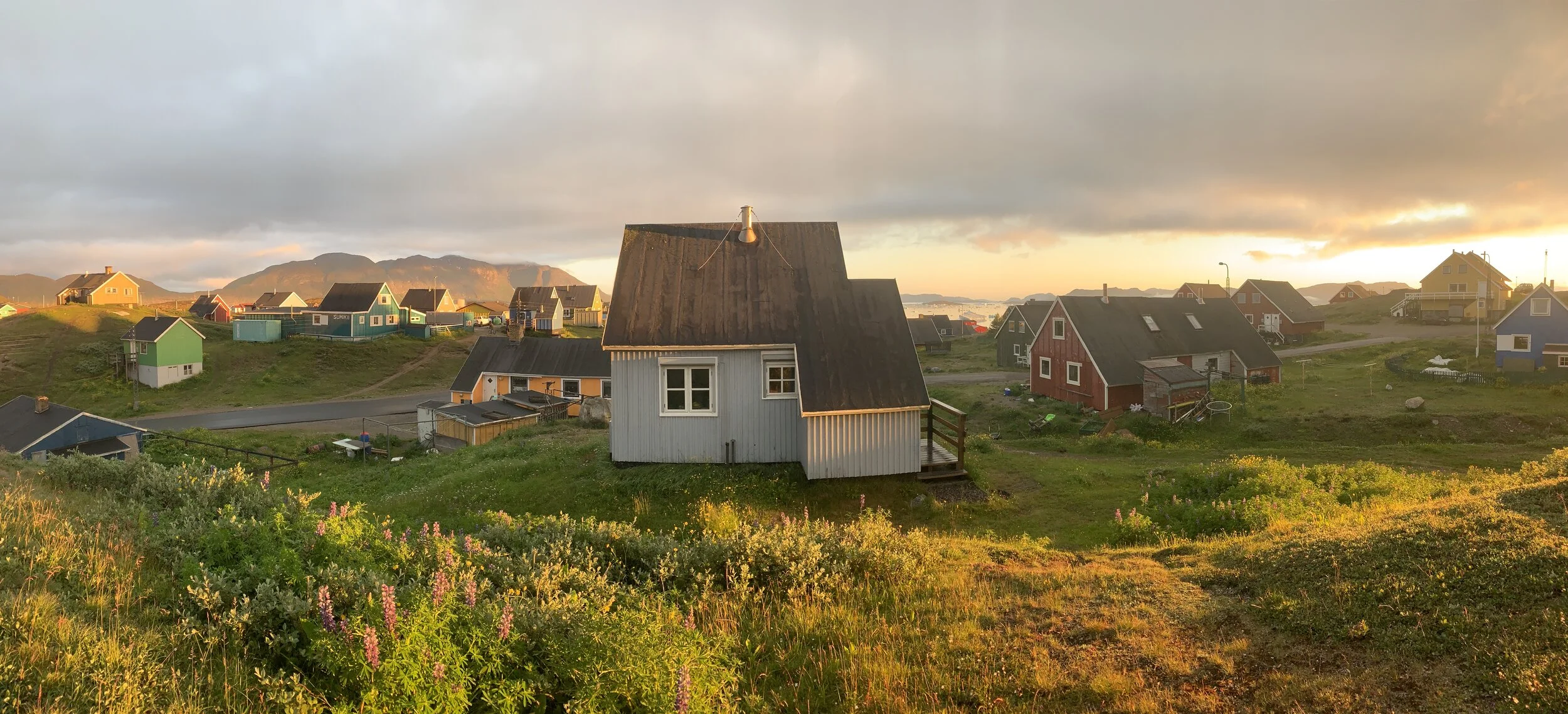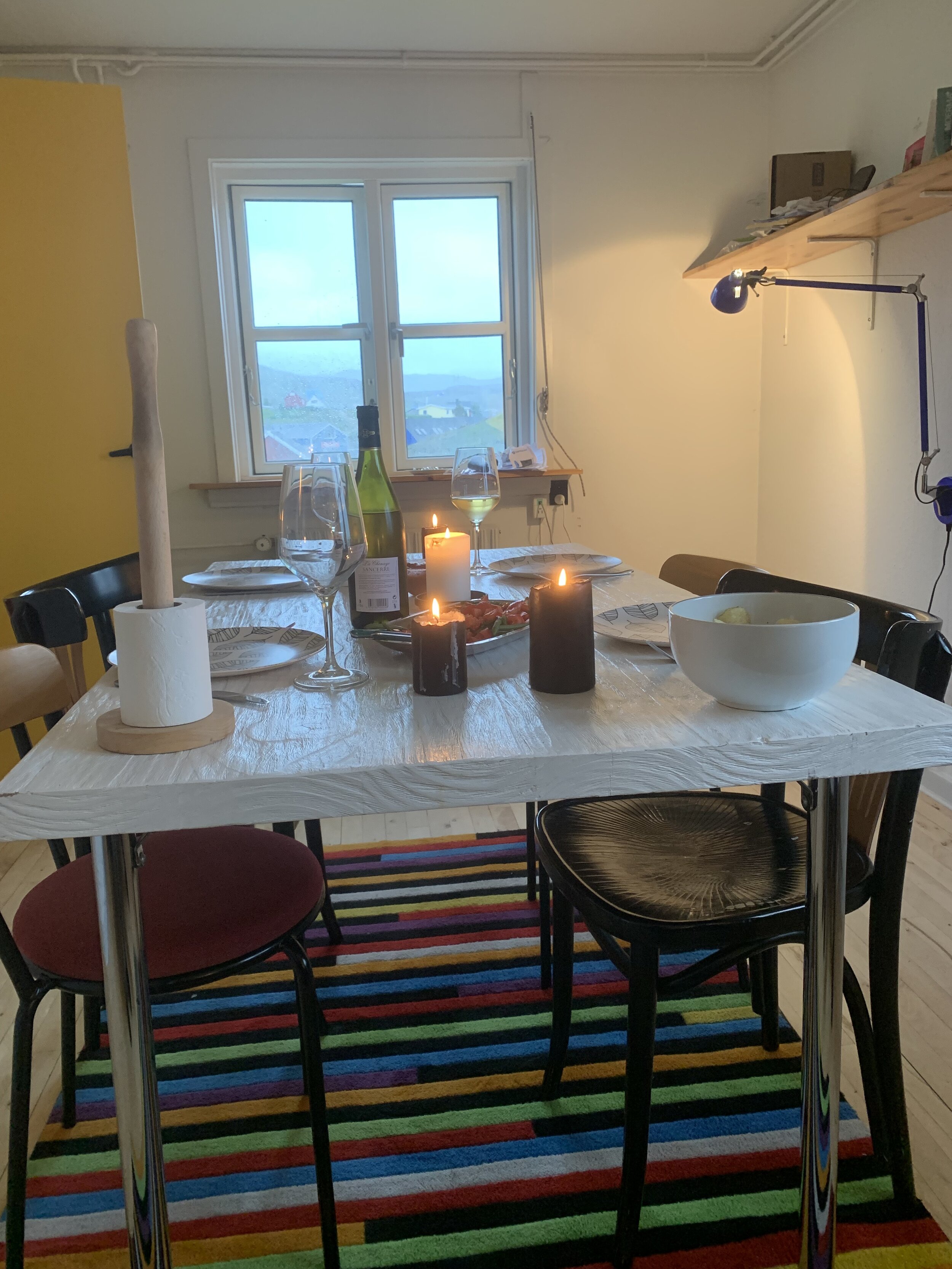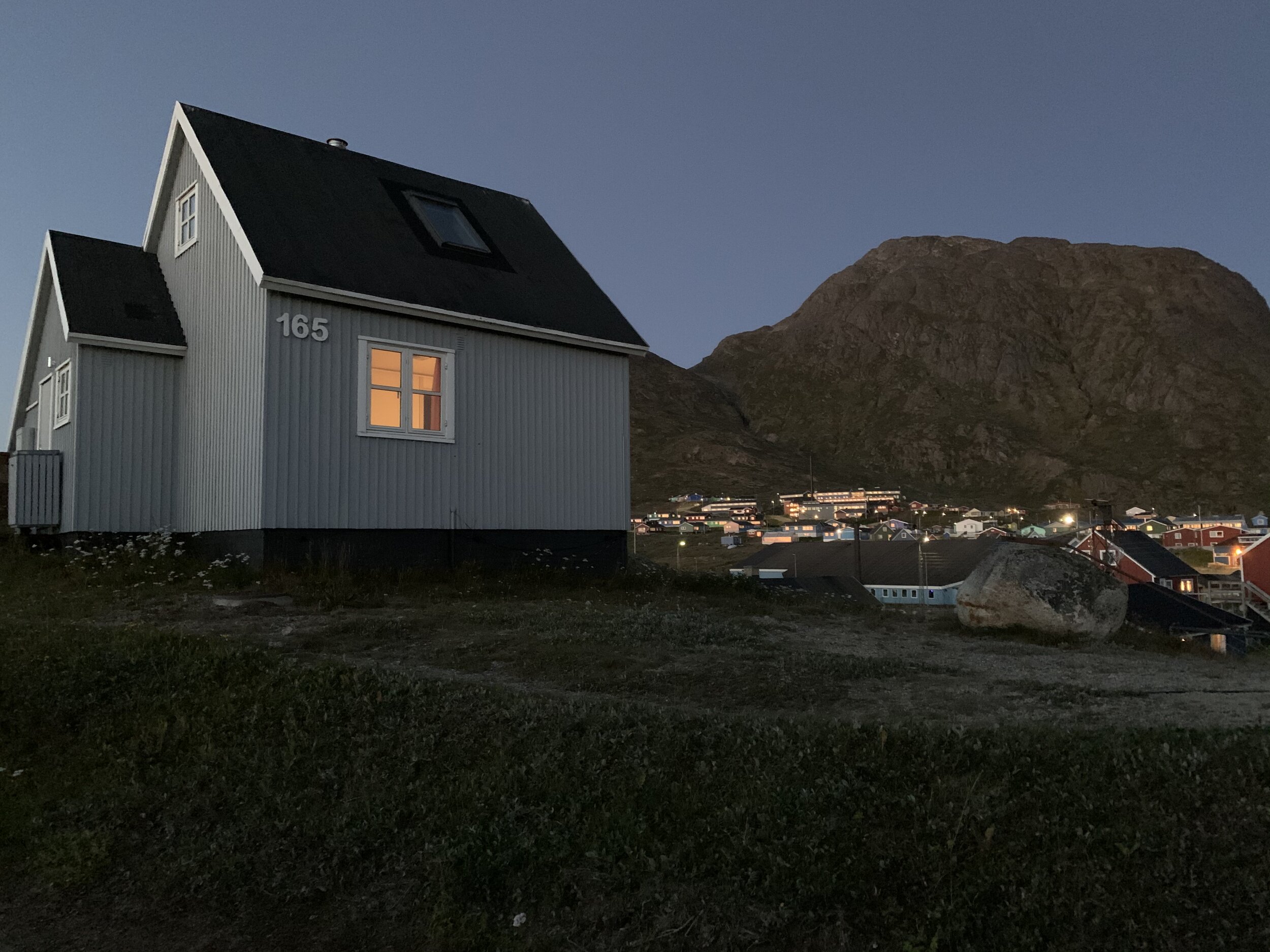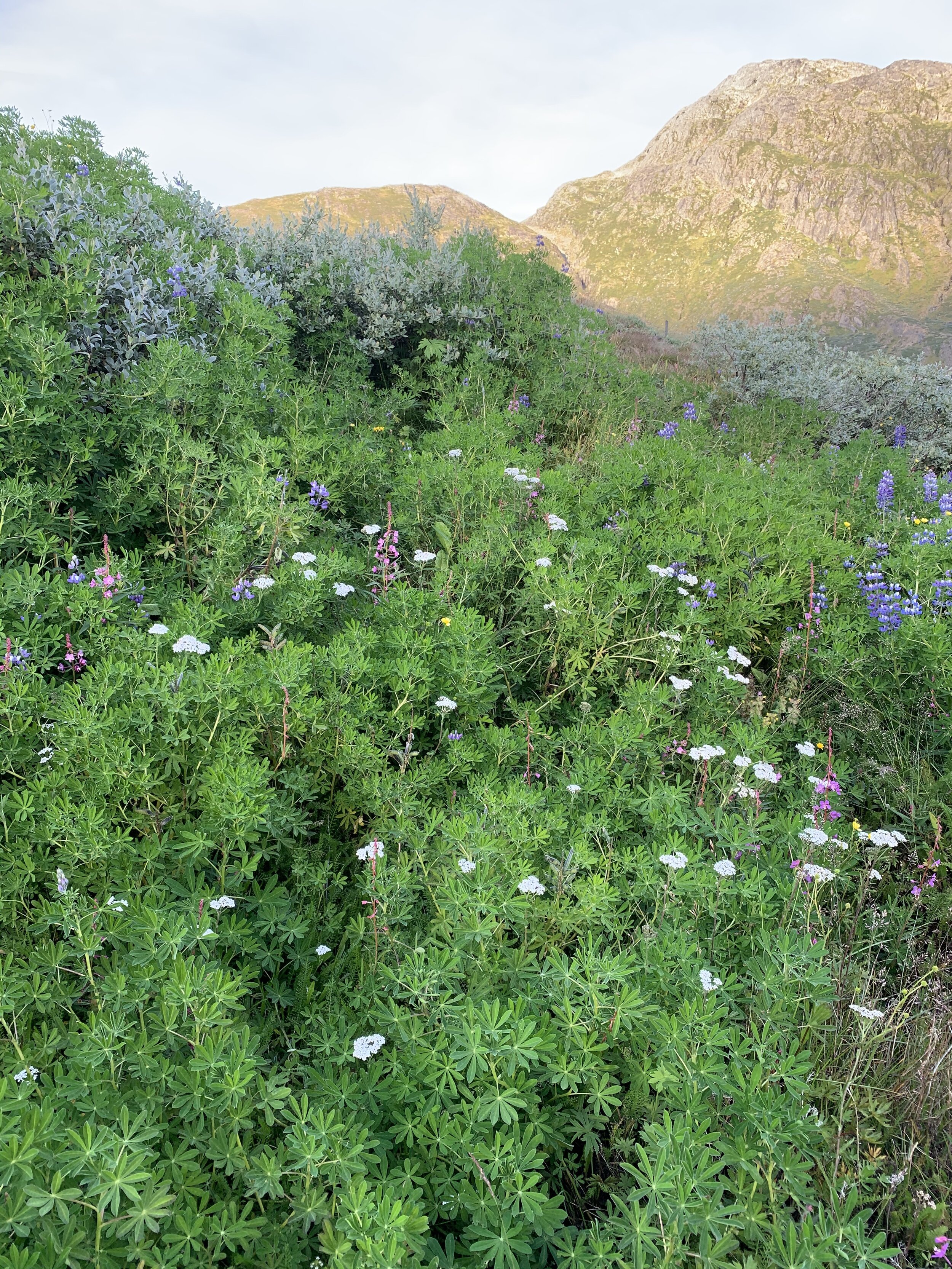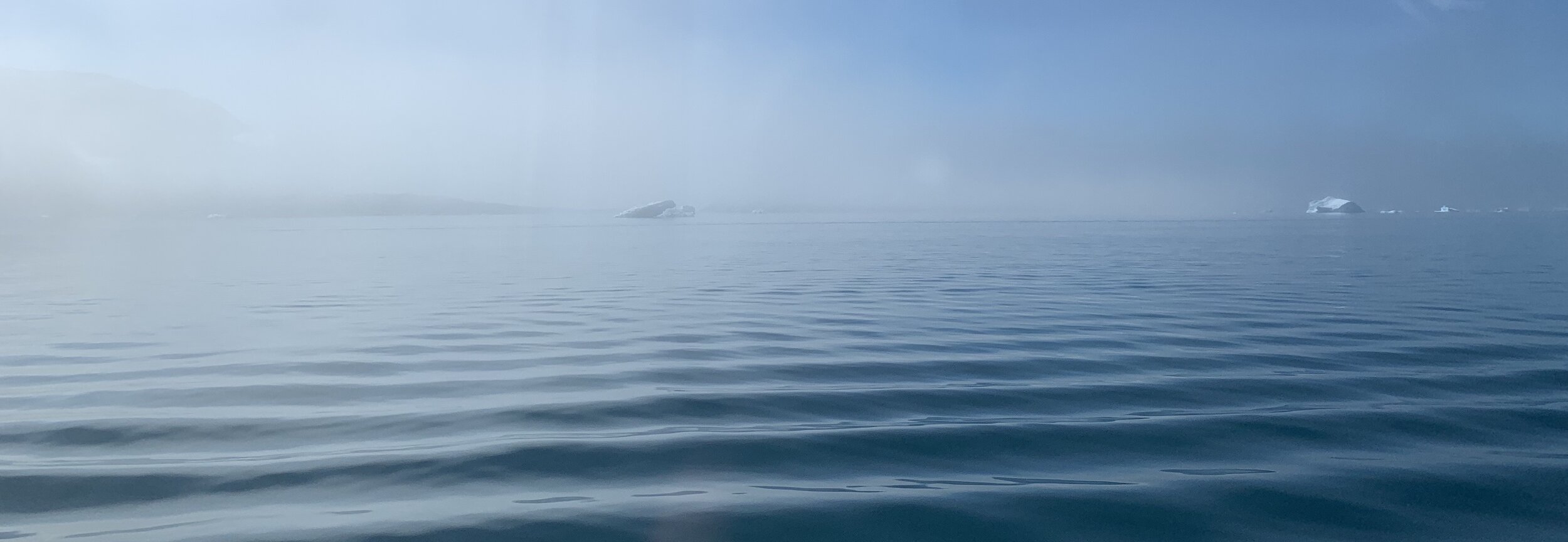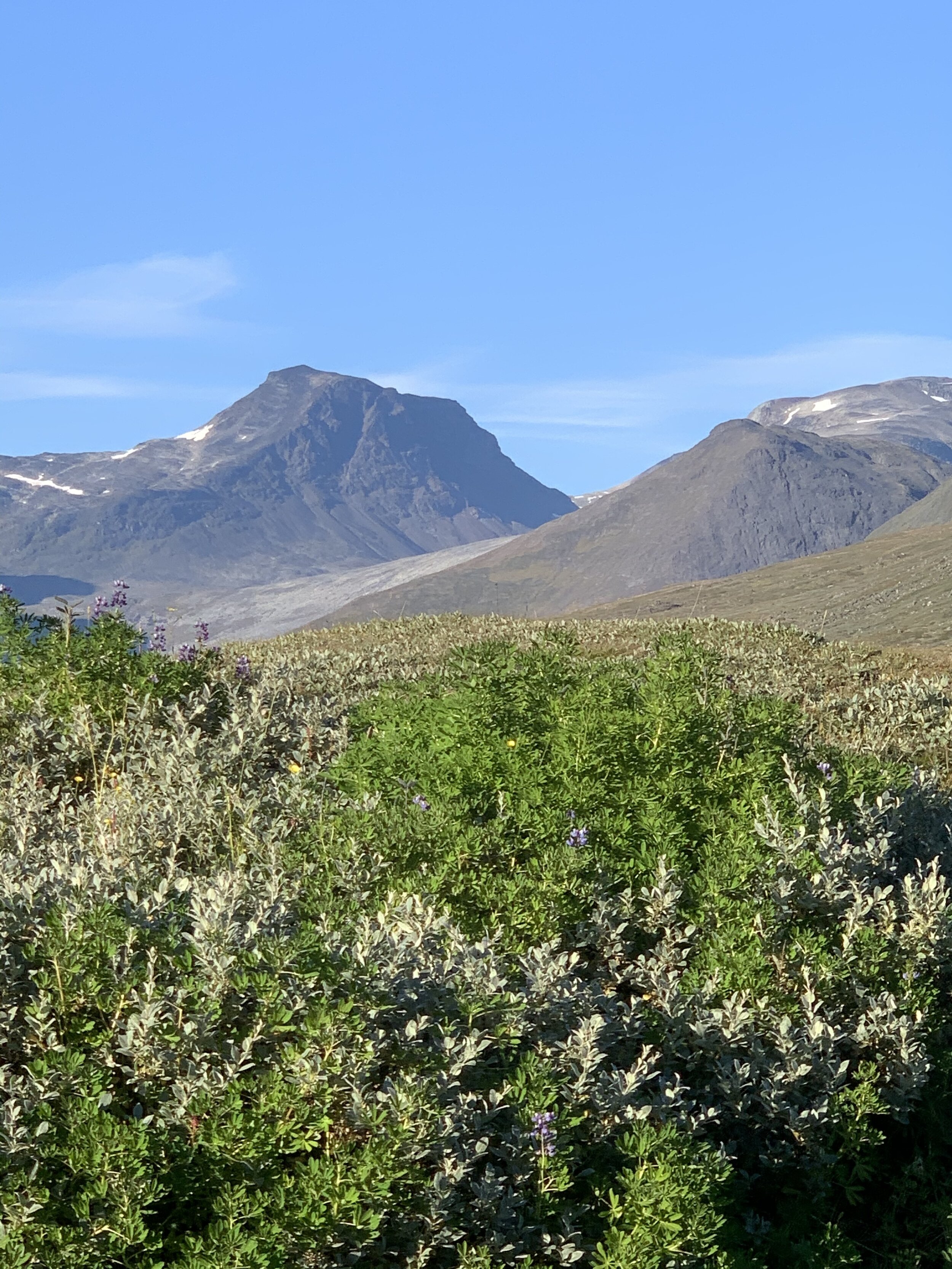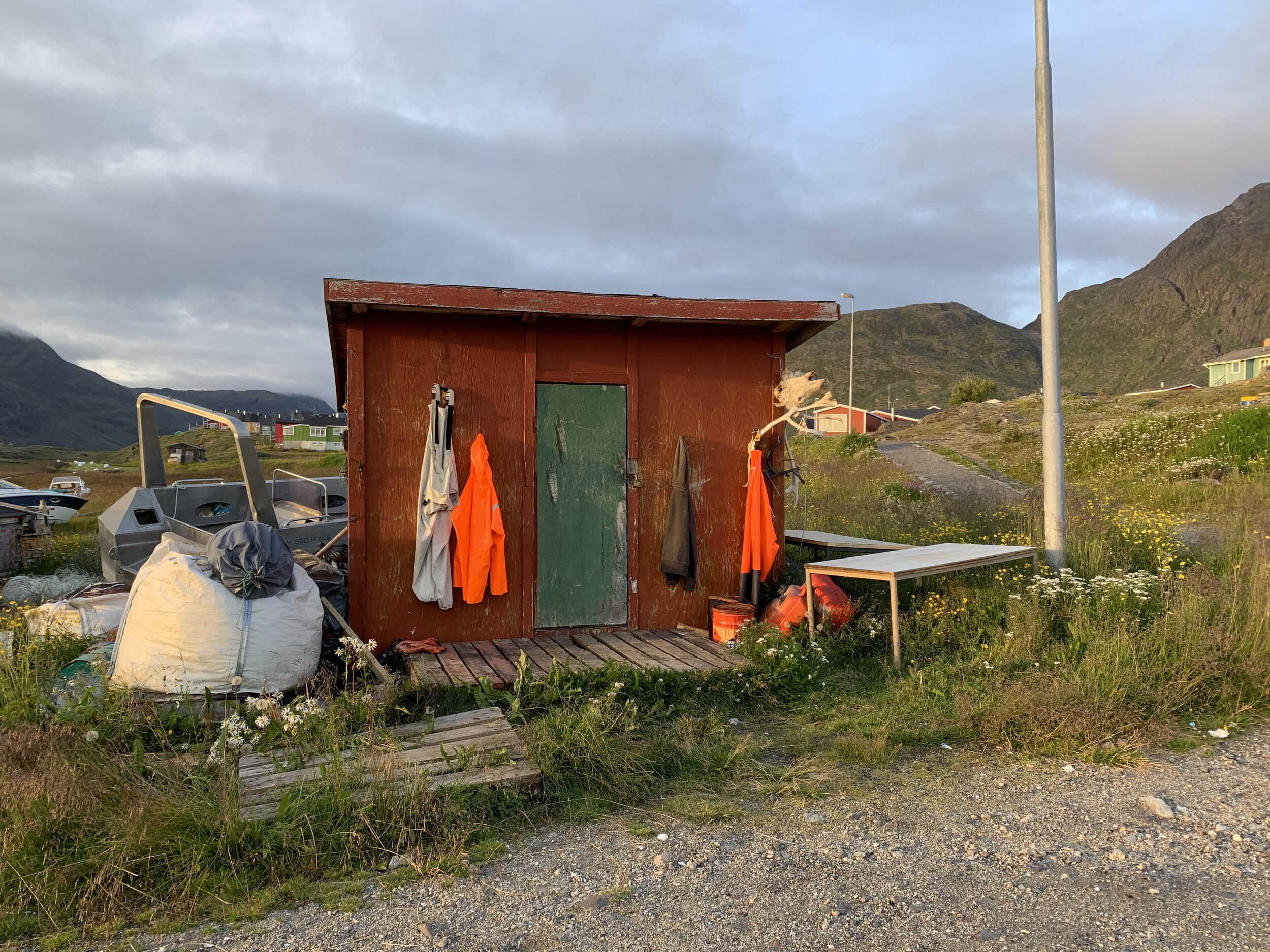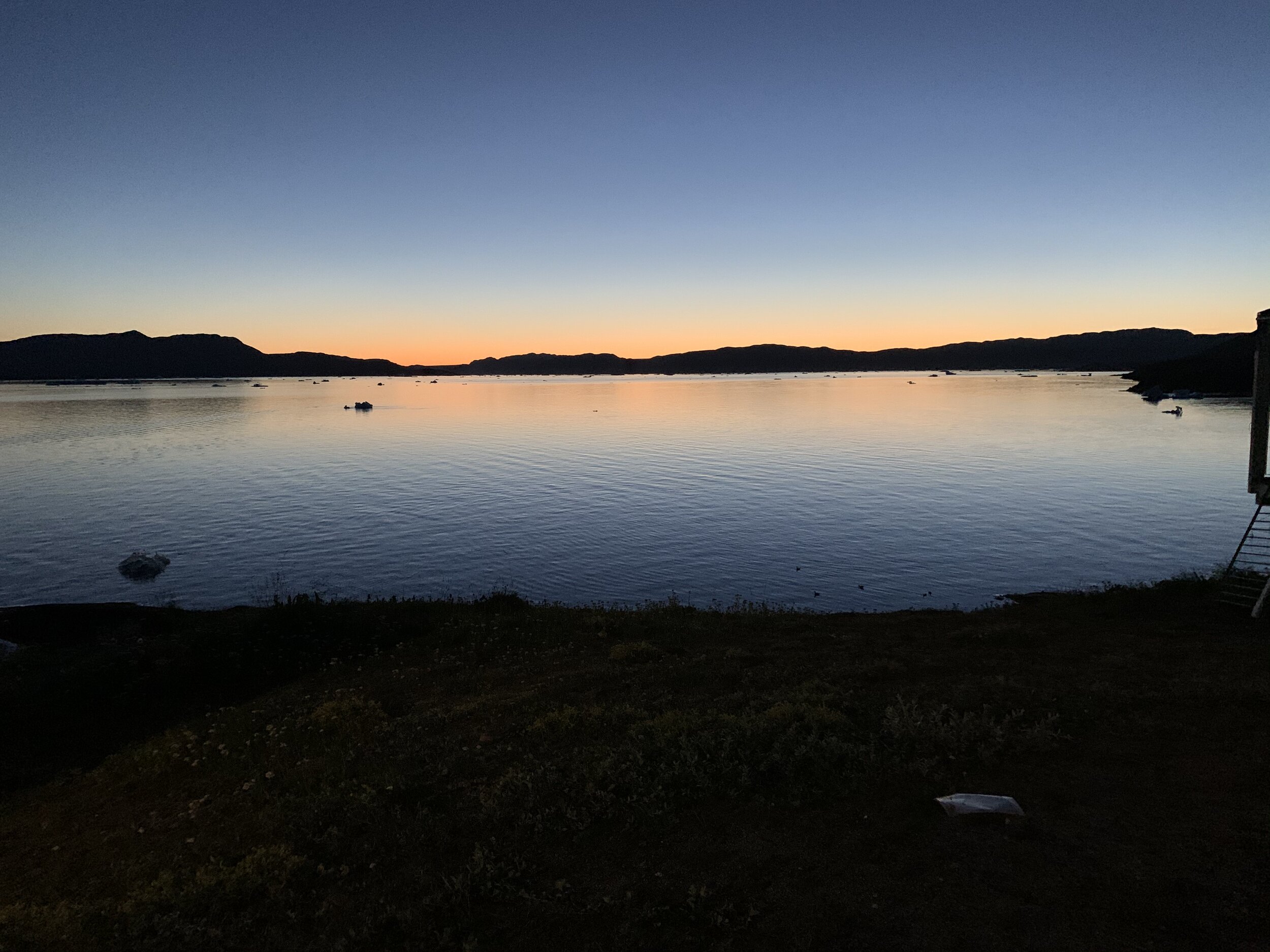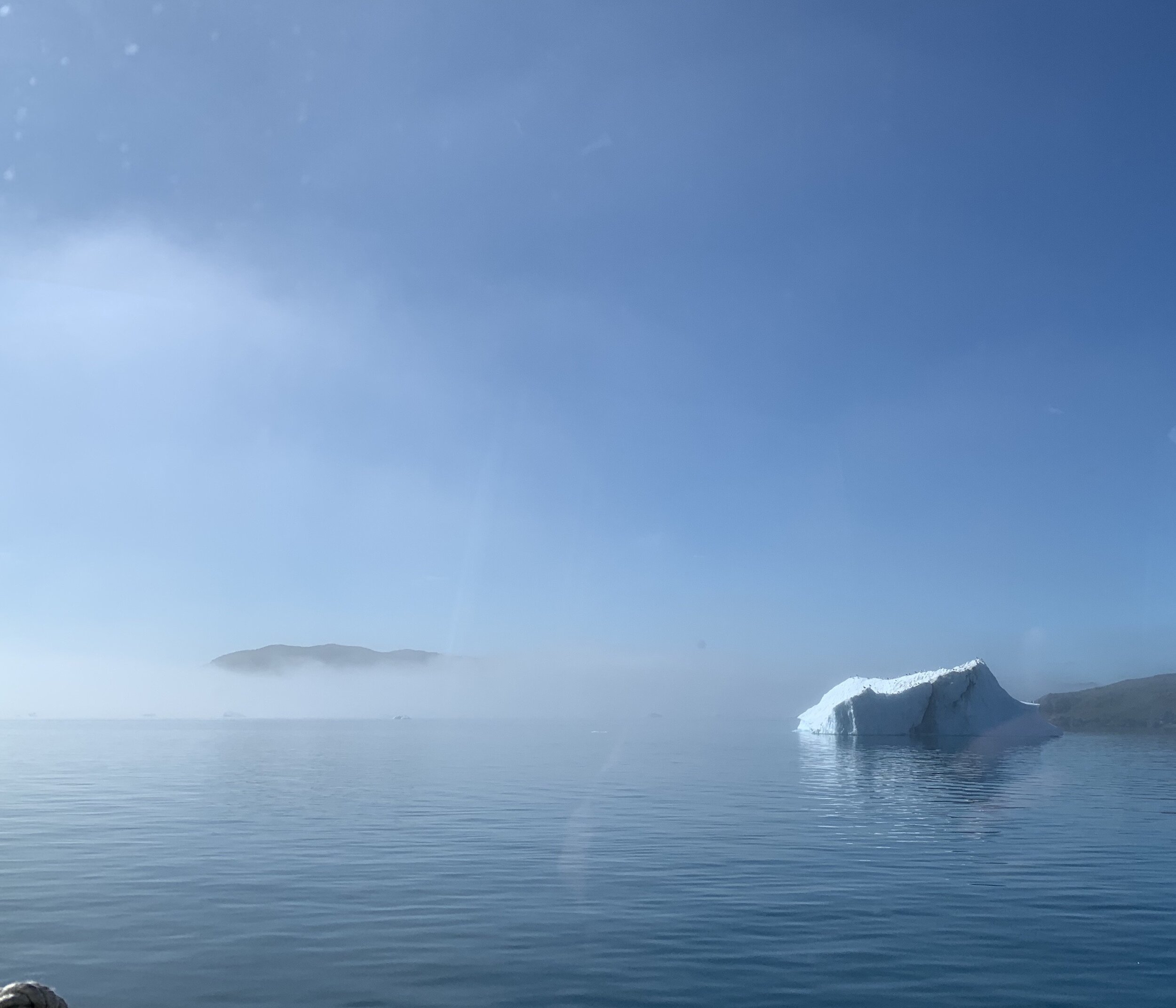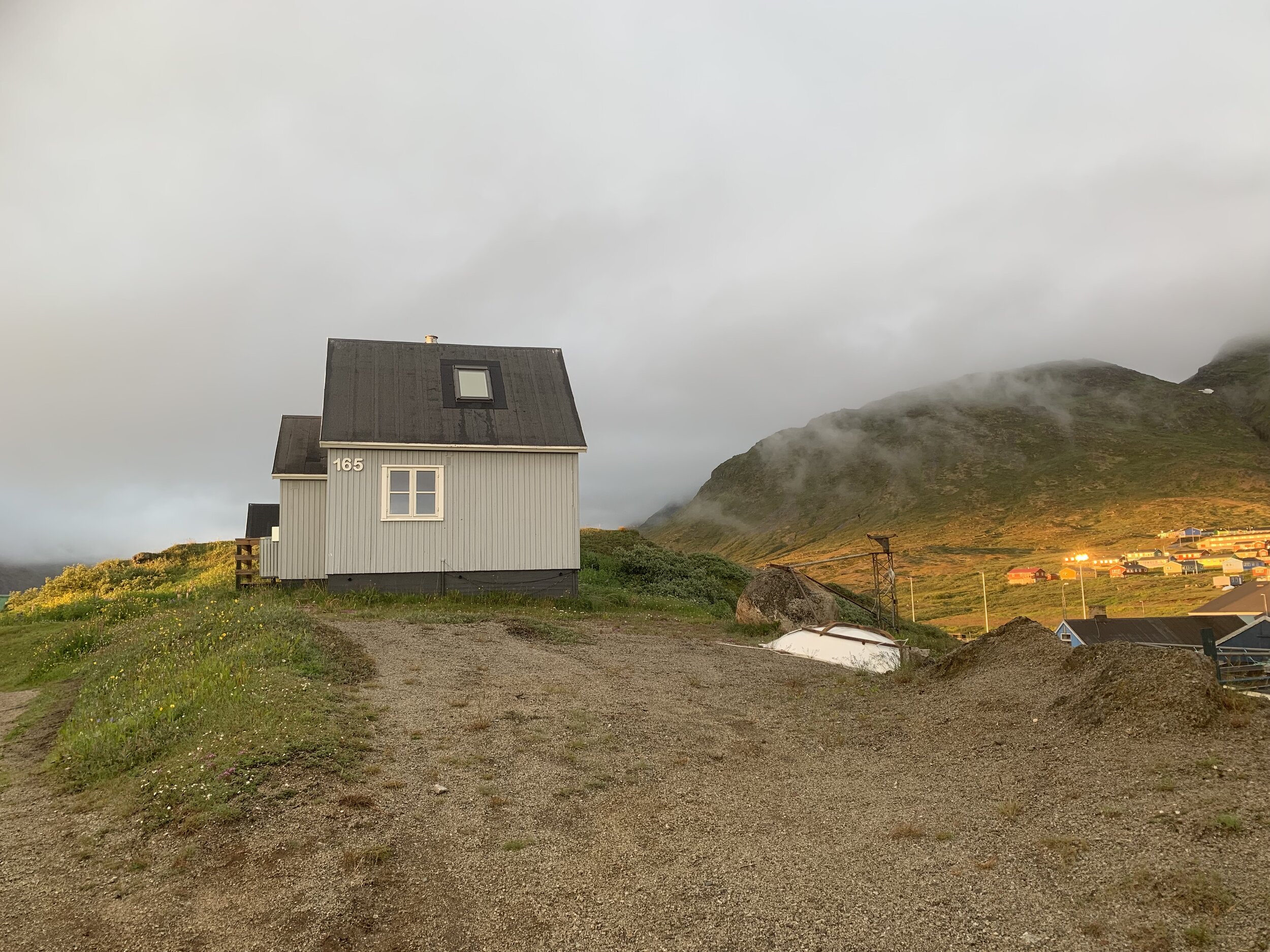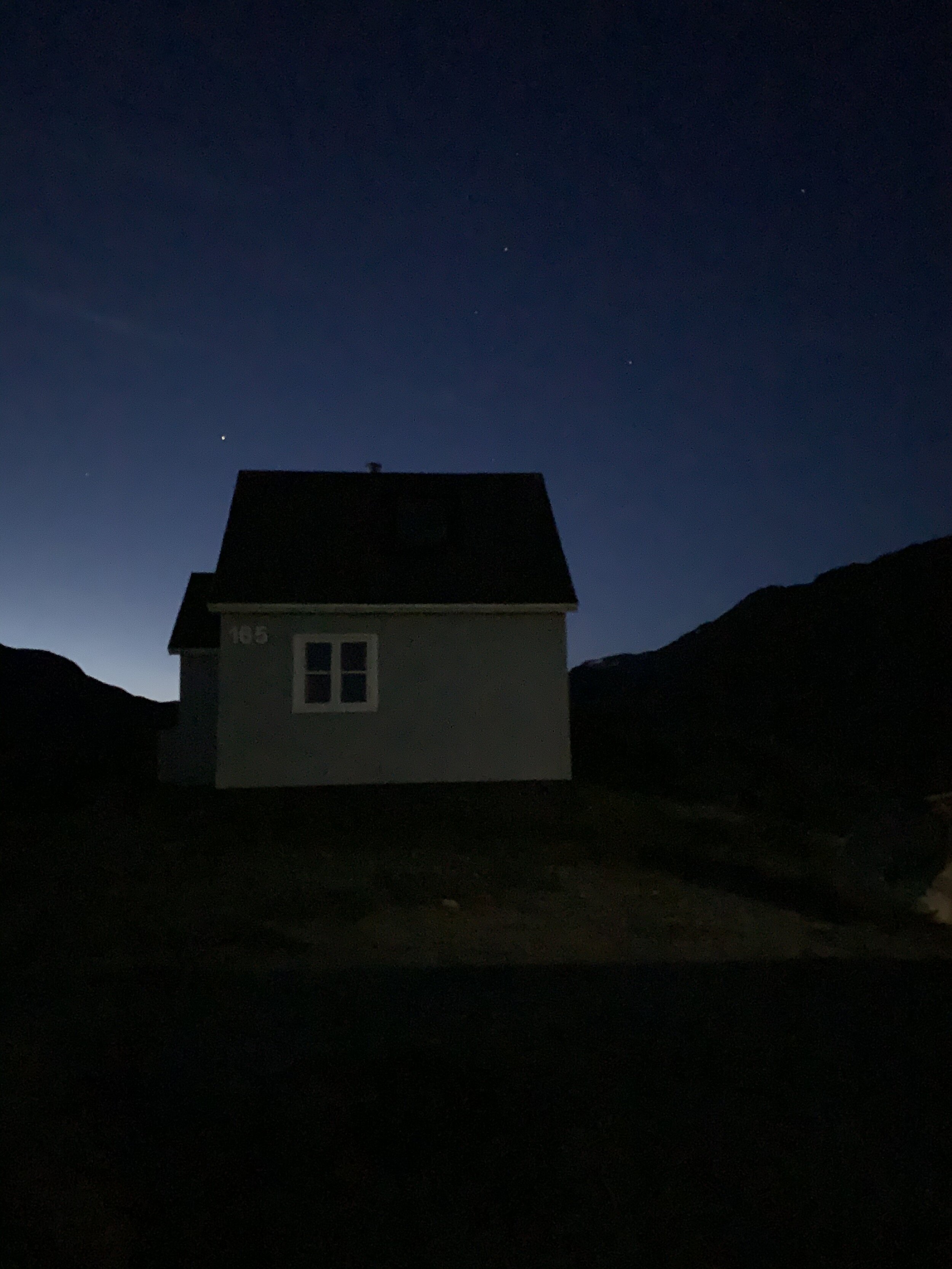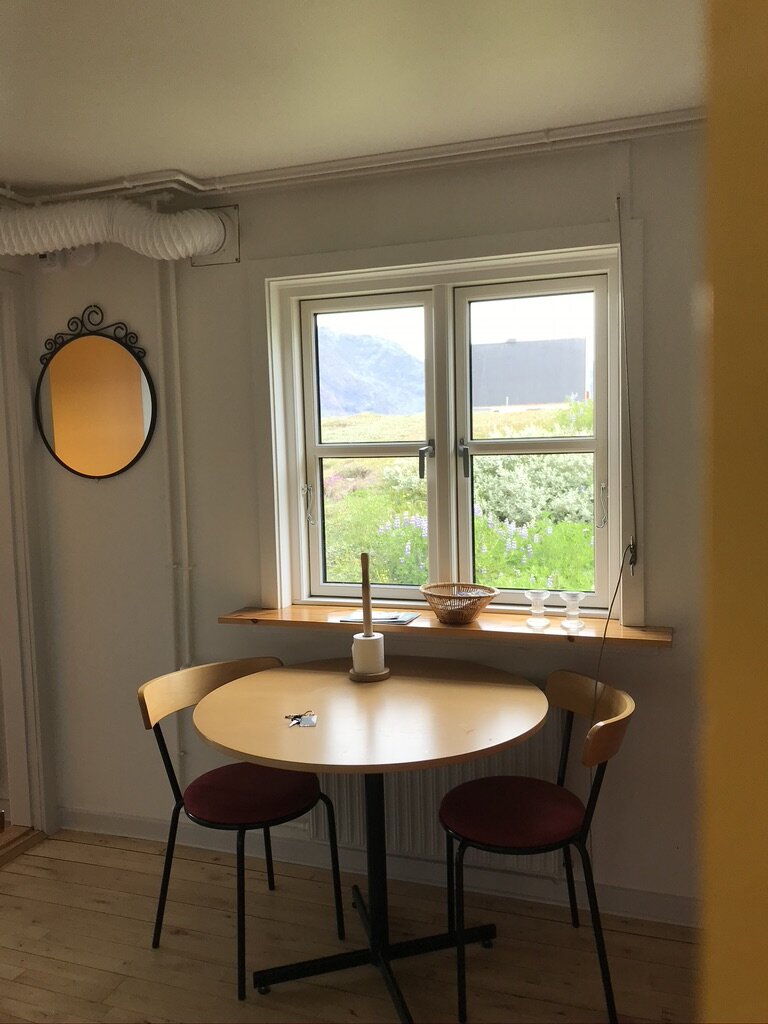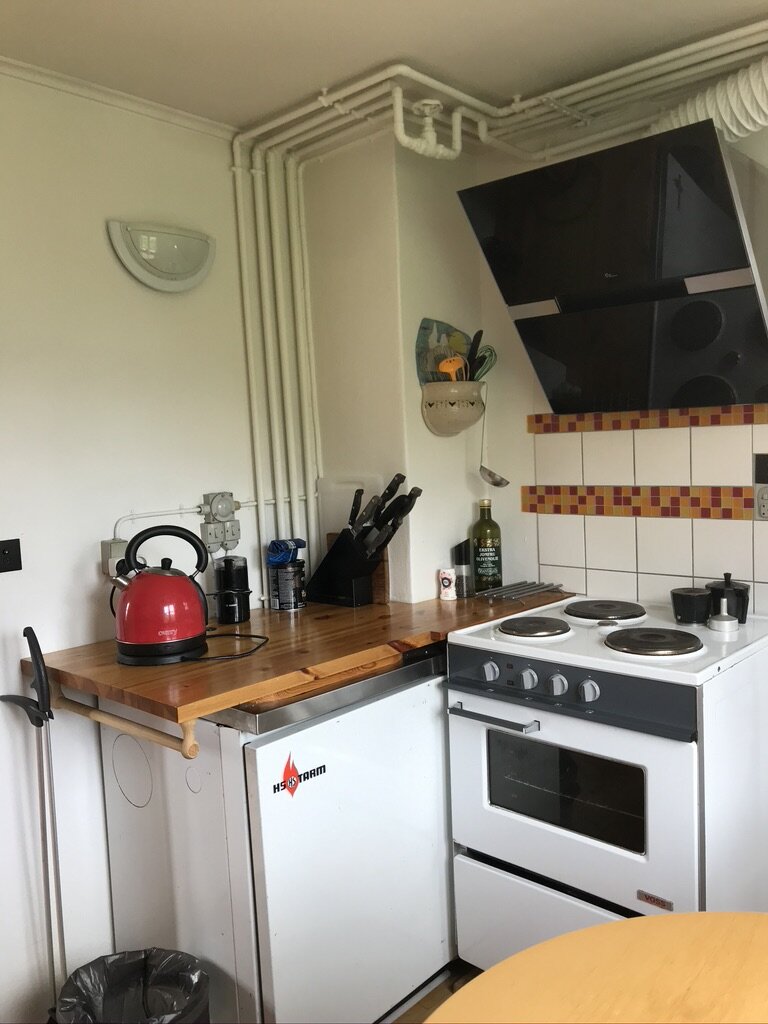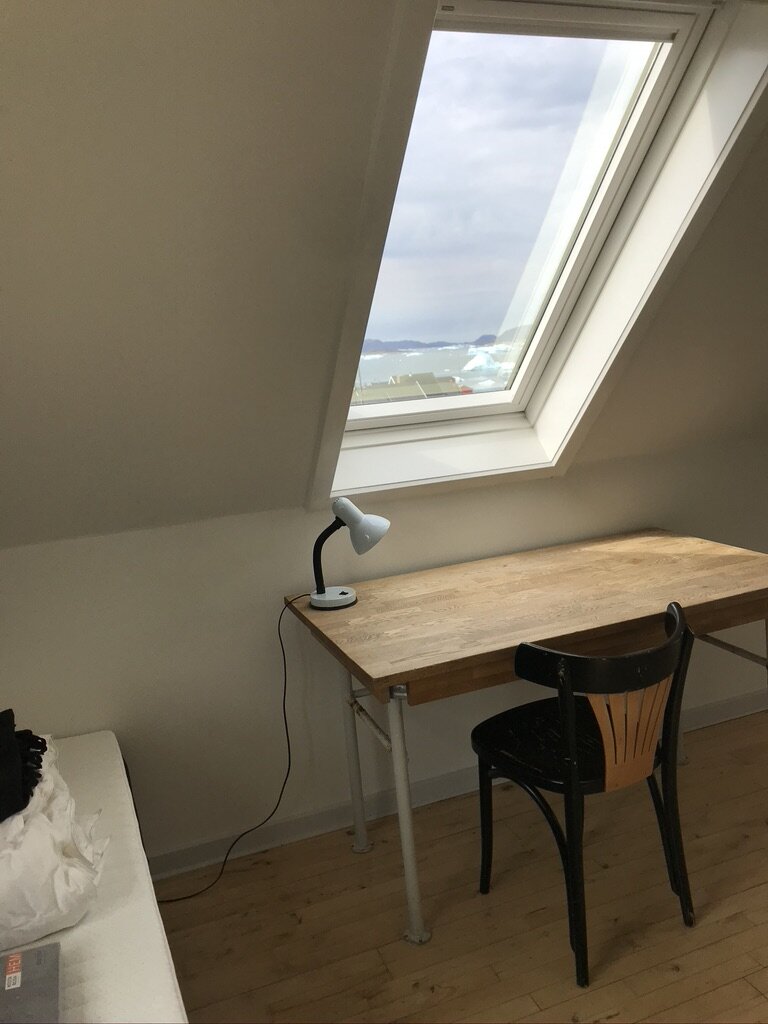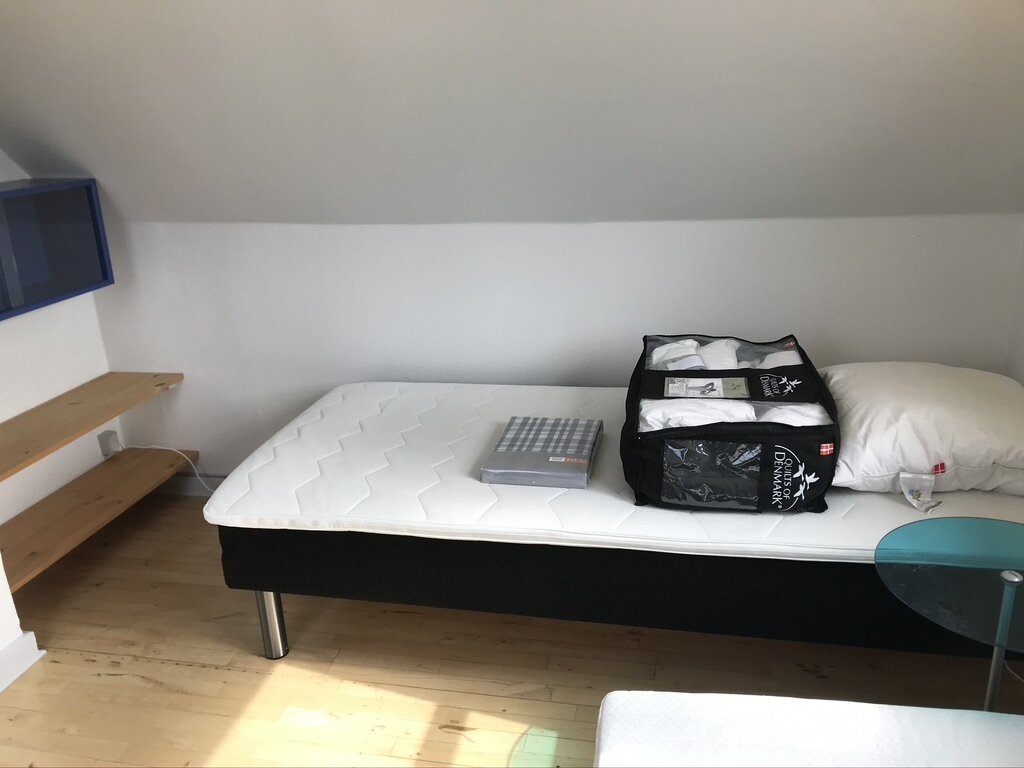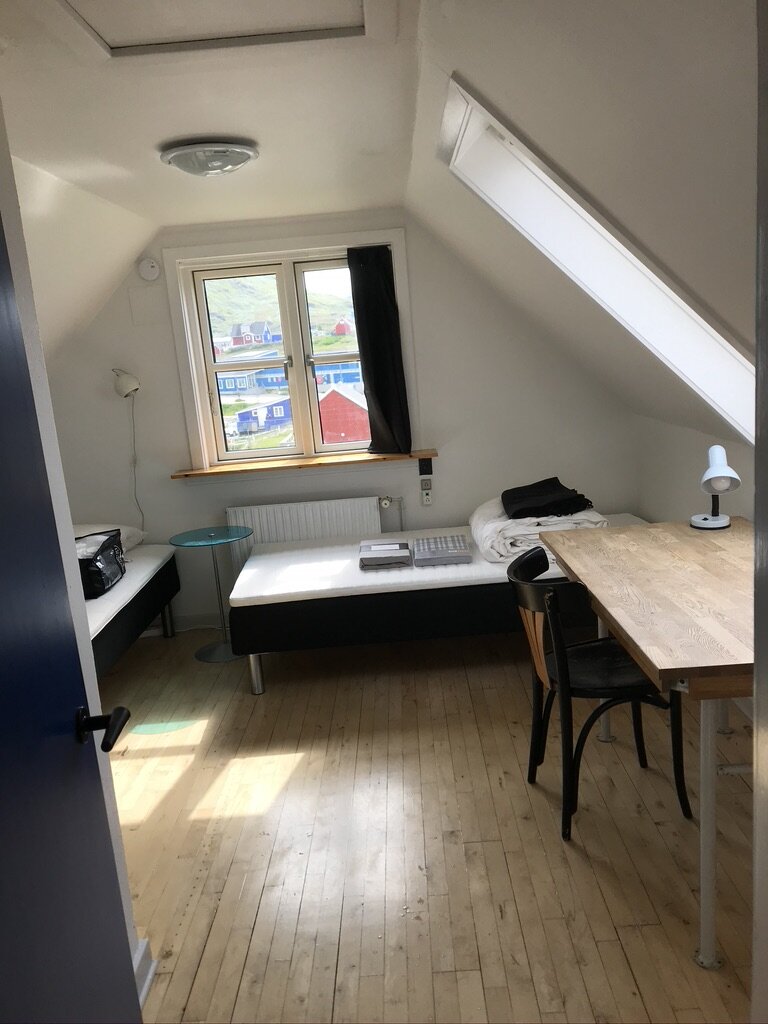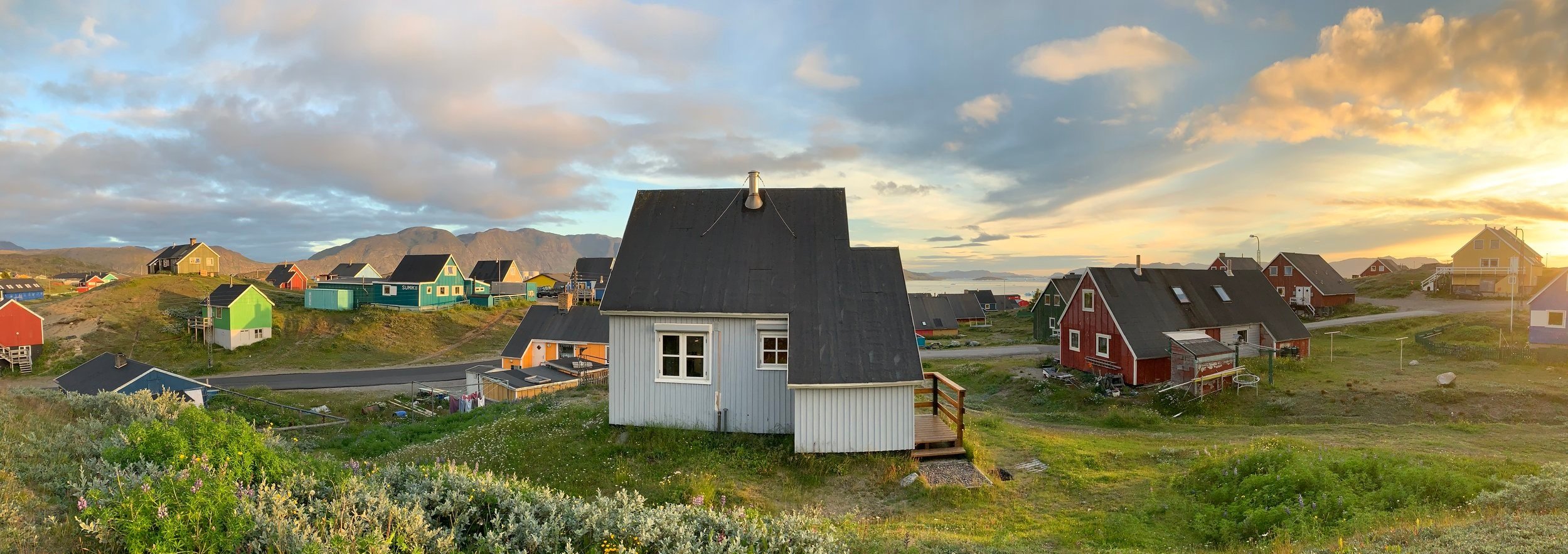
Narsaq International Research Station is an independent non-profit research platform with a focus on cultural and scientific research of benefit to the local population in South Greenland. The Research Station is located in a region of outstanding natural beauty and cultural heritage that is central for understanding some of the most urgent challenges the world is facing today.
-
December 2025
- Dec 2, 2025 Vertically-resolved source contributions to climate-relevant aerosol properties in Southern Greenlandic fjord systems Dec 2, 2025
- Dec 2, 2025 Last General Assembly of the GreenFjord Programme Dec 2, 2025
-
November 2025
- Nov 20, 2025 PostDoc project about pregnancy, birth, and motherhood in Kalaallit Nunaat Nov 20, 2025
-
October 2025
- Oct 29, 2025 Lise Autogena presenting at the Greenland Science Conference 2025: ‘Narsaq International Research Station - A cross-disciplinary Model for building Community Centred Research in South Greenland’ Oct 29, 2025
- Oct 18, 2025 Silvia Rossi and Elena Mazzi awarded the Nordic Alliance of Artists Residencies on Climate Action (NAARCA) at Narsaq International Research Station Oct 18, 2025
- Oct 18, 2025 Arctic Art Education Camped in Narsaq, Greenland Oct 18, 2025
-
September 2025
- Sep 23, 2025 GreenFjord Outreach Summer 2025 Sep 23, 2025
- Sep 22, 2025 Value creation, contestation, and power relations surrounding mining operations in South Greenland Sep 22, 2025
- Sep 13, 2025 Last two days of Narsaq Science Week Sep 13, 2025
- Sep 3, 2025 The second day of Narsaq Science Week Sep 3, 2025
- Sep 3, 2025 First day of Narsaq Science Week Sep 3, 2025
- Sep 3, 2025 Young people from Narsaq on the Forel Research Vessel Sep 3, 2025
-
August 2025
- Aug 20, 2025 Greenfjord Human Cluster Team at NIRS Aug 20, 2025
- Aug 20, 2025 Join the Greenfjord Team for a friendly football match during Narsaq Science Week Aug 20, 2025
- Aug 20, 2025 Scientists deployed innovative fiber optics in Greenland Aug 20, 2025
- Aug 20, 2025 Narsaq Science Week is happening soon! Aug 20, 2025
- Aug 20, 2025 Morten Nielsen and Ditte Maria Bjerg: performance research Aug 20, 2025
- Aug 20, 2025 Nunamut pisuttuaqatigisigut issuatsianik orsuaasanillu ilikkagaqarneralutit! Aug 20, 2025
- Aug 20, 2025 Join us for a nature walk to learn about moss and lichen! Aug 20, 2025
- Aug 20, 2025 Erngup Sunnitutai Aug 20, 2025
- Aug 20, 2025 Imprinting Water Workshop with Youth Club Aug 20, 2025
-
June 2025
- Jun 29, 2025 Workshop with DIY Sensors and Geophones Jun 29, 2025
- Jun 29, 2025 Ongoing research into the migration of the arctic char Jun 29, 2025
- Jun 29, 2025 Workshop: Seeing Deeper: Narsaq’s Human & Ecological Communities Jun 29, 2025
- Jun 29, 2025 Announcement of the Narsaq Science Week, 2-6 September 2025 Jun 29, 2025
- Jun 29, 2025 “Residencies as Climate Actors - Naarca.art” Jun 29, 2025
- Jun 29, 2025 “Justice in Greenland’s Blue Economy: My Journey from Nuuk to Narsaq” Jun 29, 2025
- Jun 29, 2025 Restoration work at NIRS Jun 29, 2025
-
April 2025
- Apr 1, 2025 NOMADIC HUB OF ARCTIC ART EDUCATION Apr 1, 2025
-
March 2025
- Mar 30, 2025 Call for artists: The Nordic Alliance of Artists' Residencies on Climate Action (NAARCA) Mar 30, 2025
- Mar 30, 2025 NIRS at the Arctic Science Summit in Boulder, Colorado Mar 30, 2025
-
November 2024
- Nov 19, 2024 Karsten Ortooraq at NIRS to work on his film 'Mallinngooq Inua Innersuillu' 'Spirit of The Wave and The Fire Dwellers' Nov 19, 2024
- Nov 19, 2024 The yearly Greenfjord meeting at University of Lausanne Nov 19, 2024
- Nov 7, 2024 Research into the migration and ecological divergence of the arctic char in South Greenland Nov 7, 2024
- Nov 1, 2024 Celebrating the cultural importance of self-sufficiency through fishing and hunting Nov 1, 2024
- Nov 1, 2024 How can voices, opinions and priorities of local communities inform national politics and fisheries laws Nov 1, 2024
- Nov 1, 2024 Finally! Mains water is being installed at NIRS Nov 1, 2024
-
July 2024
- Jul 26, 2024 Nicolaj K. Larsen, Professor of Quaternary Geology staying at NIRS to study the ice and climate history of the region Jul 26, 2024
- Jul 26, 2024 Online exhibition of commissioned work by artists Rikke Luther & Nikhil Vettukattil Jul 26, 2024
- Jul 10, 2024 Lake ecology and "cyanotype" sun-powered printmaking workshop Jul 10, 2024
-
June 2024
- Jun 24, 2024 Overview of research stations in Greenland Jun 24, 2024
- Jun 24, 2024 Testing Grounds Pod Cast: ‘Narsaq International Research Station – Who Defines Progress?’ Jun 24, 2024
- Jun 24, 2024 Nordic Alliance of Artists Residencies on Climate Action (NAARCA) Jun 24, 2024
- Jun 24, 2024 Food resilience in the face of extreme changing island climates Jun 24, 2024
- Jun 24, 2024 Fermentation workshop and introduction to project exploring food culture in South Greenland Jun 24, 2024
- Jun 5, 2024 The Greenfjord Cryosphere Cluster invites young people from Narsaq to join their scientific glacier expedition on ice-ship Adolf Jensen Jun 5, 2024
-
May 2024
- May 14, 2024 Nikhil Vettukattil May 14, 2024
- May 14, 2024 Nordic Alliance of Artists’ Residencies on Climate Action (NAARCA) : Artist and writer Nikhil Vettukattil at NIRS May 14, 2024
- October 2023
-
July 2023
- Jul 2, 2023 Weather balloon test flight for everyone in Narsaq Jul 2, 2023
-
May 2023
- May 18, 2023 Update on the Greenfjord project’s research activities in Narsaq this summer May 18, 2023
- May 11, 2023 Artists Naja Abelsen and Eleanor Havsteen Franklin at NIRS May 11, 2023
-
December 2022
- Dec 20, 2022 NIRS now a partner of The Nordic Alliance of Artists’ Residencies on Climate Action (NAARCA) Dec 20, 2022
- Dec 20, 2022 ‘Indoor radon survey in Greenland and dose assessment’ Dec 20, 2022
- November 2022
- October 2022
-
September 2022
- Sep 13, 2022 Sea-Water Colour Workshop in Narsaq / Workshop ; Immap qalipaatai - akvarel atorlugu Narsami qalipaaneq Sep 13, 2022
- Sep 8, 2022 Comparative research into intangible cultural heritage between two coastal regions across the Northwest Atlantic Sep 8, 2022
- Sep 8, 2022 Public Meeting about Radon and the Indoor Environment in Narsaq Community Hall Sep 8, 2022
- Sep 5, 2022 ‘Climate Change Impact on Radon and Human Health Dose Assessment’ Sep 5, 2022
- Sep 3, 2022 Inuiaqatigiit iluanni apeqqummut unammillernartumut ilanngunneqarneq: Arnat, aatsitassarsiorneq, pi. Sep 3, 2022
- Sep 3, 2022 Om at blive involveret i udfordrende samfundsspørgsmål: Kvinder, Minedrift og Naturbeskyttelse Sep 3, 2022
-
August 2022
- Aug 22, 2022 Canadian researcher Joanna Kafarowski undertaking research into gender, exploration and climate change in Greenland Aug 22, 2022
- Aug 18, 2022 NIRS is hosting the four year research programme: GreenFjord (Greenlandic fjord ecosystems in a changing climate: socio-cultural and environmental interactions) Aug 18, 2022
- Aug 14, 2022 Back to the Future for Lakes and Streams around Narsaq - a Danish/ Greenlandic research project focused on the ecology of freshwater streams and lakes in the Narsaq area. Aug 14, 2022
- Aug 2, 2022 Sermitisaq: “Kalaallit radonimut ulorianartorsiorsinnaapput - kingunerluuteqarsinnaasumik” Aug 2, 2022
-
July 2022
- Jul 28, 2022 Researchers from the Swiss Greenfjord research consortium (fjord ecosystems monitoring in South Greenland) will install sensors in fjords and glaciers near Narsaq. Jul 28, 2022
- Jul 9, 2022 Jakob Brodersen and team of researchers from Eawag, Switzerland conducting fish ecology (arctic char) research in South Greenland. Jul 9, 2022
-
June 2022
- Jun 30, 2022 Researchers from Aarhus University’s Institute of AgroEcology staying to present their research on glacial flour impact on agricultural soil at the sheep-farmers meeting in Narsaq Jun 30, 2022
- Jun 28, 2022 Meeting with residents in Narsaq and local members of parliament and the regional council about the future plans for Narsaq International Research Station Jun 28, 2022
- Jun 4, 2022 Zane Cooper continued phd research at NIRS: Evolving relationships between data, energy and extraction in the Arctic Jun 4, 2022
-
May 2022
- May 30, 2022 NIRS starts collaboration with theatre director Hanne Trap Friis (Teater Freeze Productions) and film maker Inuk Jørgensen on the development of theatre-film production in South Greenland. May 30, 2022
- May 30, 2022 Feature in Sermitsiaq newspaper: ‘Narsaq får ny forskningsstation’ May 30, 2022
- May 26, 2022 Arctic Hub Article: ‘Keeping Knowledge in Narsaq’ May 26, 2022
-
December 2021
- Dec 1, 2021 NIRS winter closure Dec 1, 2021
-
November 2021
- Nov 21, 2021 NIRS featured in Arctic Hub / Sermitsiaq publication Nov 21, 2021
- Nov 1, 2021 Artist researcher Rikke Luther researching glacial mud in collaboration with scientists in Denmark and Greenland. Nov 1, 2021
- October 2021
- September 2021
- August 2021
-
July 2021
- Jul 1, 2021 NIRS opens for research visits Jul 1, 2021
-
June 2021
- Jun 11, 2021 GREENLAND – DENMARK 1721-2021 Conference, Aalborg University, 9-11 June 2021 Jun 11, 2021
Purpose
Narsaq is a geographic region where many of the most important decisions currently facing Greenland are at their most visible and urgent. These are long-term decisions about sustainable development, independence, mining, environmental protection, democracy, infrastructure, cultural heritage, climate change and Greenland’s geopolitical role in the world. This confluence of globally important questions is the motivation for establishing Narsaq International Research Station.
The Research Station provides a platform for researchers, artists and organisations to learn from Greenland and its importance to the rest of the world.
The Research Station supports research across the sciences, humanities and the arts in collaboration with Greenlandic, Nordic, and international universities and cultural organisations.
The Research Station aims to contribute to the conservation and awareness of the invaluable natural and cultural heritage of the Narsaq region.
The research station will ensure that research taking place in South Greenland will benefit the local population.
Projects
The Research Station provides residency for projects with a specific focus on the Narsaq and South Greenland region. Projects must have a socially and environmentally sustainable approach to research and engagement with the local community and the results must be intended for public dissemination.
Researchers are expected to communicate their research to the local community - e.g through lectures, workshops, film screenings, exhibitions, performances or teaching at schools, museums, community centres or organisations in Narsaq and the region. Contacts will be facilitated by NIRS in collaboration with local organisers.
Projects will contribute to an evolving archive of research in the region, for the benefit of the local population, local schools and national as well as international researchers.
The Research Station will strive to make it financially possible, and organisationally manageable, for artists and academics to stay in South Greenland.
The Research Station will strive to generate new knowledge networks and income opportunities for the local population.
Accommodation Costs: Please contact NIRS using the form at the bottom of the page
The Research Station
Narsaq International Research Station is located in the town of Narsaq with views towards Kuannersuit (Kvanefjeld) and the fjord. The house consists of two floors, each with a combined workroom/living room. Each room has two single beds. Each room has a work space. The house has a kitchen with a small dining table, as well as a small bathroom. The house has an outdoor shower and access to shower and sauna facilities at the local sports complex around the corner. The house has central heating and a good wi-fi connection.
Local dissemination and communication of research is organised via a network of individuals, schools, organisations, and museums.
Organisation
Narsaq International Research Station was established by Lise Autogena in 2019. Lise Autogena is the daily manager of the research station. She is supported by Ivalo Motzfeldt who is the local coordinator of the research station and a local support network.
NIRS is constituted as a not for profit community organisation. The Board of Directors include Peter Berliner (GL/MX), Ivalo Motzfeldt (GL), Susanne Lynge (GL), Lise Autogena (UK), Iben Mosbæk (DK) and Peter Wissing (DK).
The Research Station participates in cooperation agreements with cultural and research institutions in Greenland and the rest of the world.
Advisory Group
Lise Autogena, Artist, Professor, Director of Art, Design and Media Research Centre at Sheffield Hallam University in England (ADMRC)
Iben Mosbæk, Art Historian, Adm. Director of Kunsthal Aarhus
Peter Wissing, economist and director of Wissing Sustain
Ivalo Motzfeldt, Head of Kultur og Fritid in Narsaq, Kujalleq Council and local coordinator for the research station.
Peter Berliner, Professor in Psychology, Institute of Social Science, Economics & Journalism, Department of Social Work at Ilisimatusarfik's Centre for Arctic Welfare & Centre for Children, Youth & Family Research
Paul Cohen, Translator, Narsaq
Kristine Lynge-Pedersen, cand. scient. soc. in geography and Communication. Researcher at Greenland Institute off Natural Resources
Jesper Enevoldsen, Historian, Director of Narsaq Museum
Nivi Christensen, Director of Nuuk Art Museum
Claudia Lastra, Executive Director, The Arts Catalyst - Centre for Art, Science & Technology, England
Susanne Andreasen, Director of The National Theatre of Greenland
Rasmus Leander Nielsen, cand.scient. pol, assistant professor and Head of Nasiffik - Centre for Foreign & Security Policy, Ilimmarfik, University of Greenland
Maria Ackrén, Associate Professor, Head of Department of Social Sciences and Head of Research at Nasiffik - Centre for Foreign & Security Policy & Centre for Children, Youth & Family Research, Ilimmarfik, University of Greenland,
Birger Poppel, Emeritus, Institute for Learning, University of Greenland
Javier Arnaut, Associate Professor in Economy at University of Greenland
Josephine Nymand, Head of Department, Department of Environment and Minerals, Greenland Institute of Natural Resources
Ulrik Pram Gad, Senior Researcher, Foreign policy and diplomacy, DIIS
Agricultural Consulting Services in Greenland
Mariia Simonsen, Member of Greenland Parliament, Associate Professor in Journalism at University of Greenland, resident of Narsaq
Anders Mosbech, Head of Research and Consultancy, Arctic Environment, Department of Bioscience, Aarhus University & Arctic Research Centre, Danish Centre for Environment and Energy
The Greenlandic Cooperative Sheep Farmers Association
Inuk Jørgensen, Film Artist, from Narsaq, resident of Nuuk
Magga Karlsen, local weaver, Narsaq
Irene Jensen, Teacher of Nutrition, Nuuk
Vivi Johansen-Stolt. Teacher in Nutrition, Paamiat
Kisser Thorsøe, Principal Adviser, Geological Survey of Denmark and Greenland (GEUS)
Mariane Paviasen, Minister for Housing and Infrastructure, Greenland Parliament
Det Grønlandske Hus in Århus (dissemination partner)
Niels Henrik Hooge, Cand. Jur. Master of Arts in Philophy, NOAH
Joshua Portway, Filmmaker, Multimedia Artist, UK
Peter Nørris-Christensen, teacher at Narsap Atuarfia, Narsaq School
Per Kunuk Lyberth -Lynge, Translator, Narsaq
Angu Motzfeldt, artist
Violeta Hansen (Scientist, Radioecology), Arctic Environment, Department of Bioscience, Danish Centre for Environment and Energy (DCE) Aarhus University
Inuk Silis Høegh, artist
Ivalo Egede Lund, Head Nurse, Narsaq
Donations
Facilities and furniture donated by Narsaq Sportscenter
VR Camera donated by Zane Cooper
Kitchen utensils donated by Paul Cohen, Monika Brune, Ivalo Egede Lund, Lone Lütken-Petersen
Books donations by Iben Mosbæk and Lise Autogena
Artwork donated by Naja Abelsen

